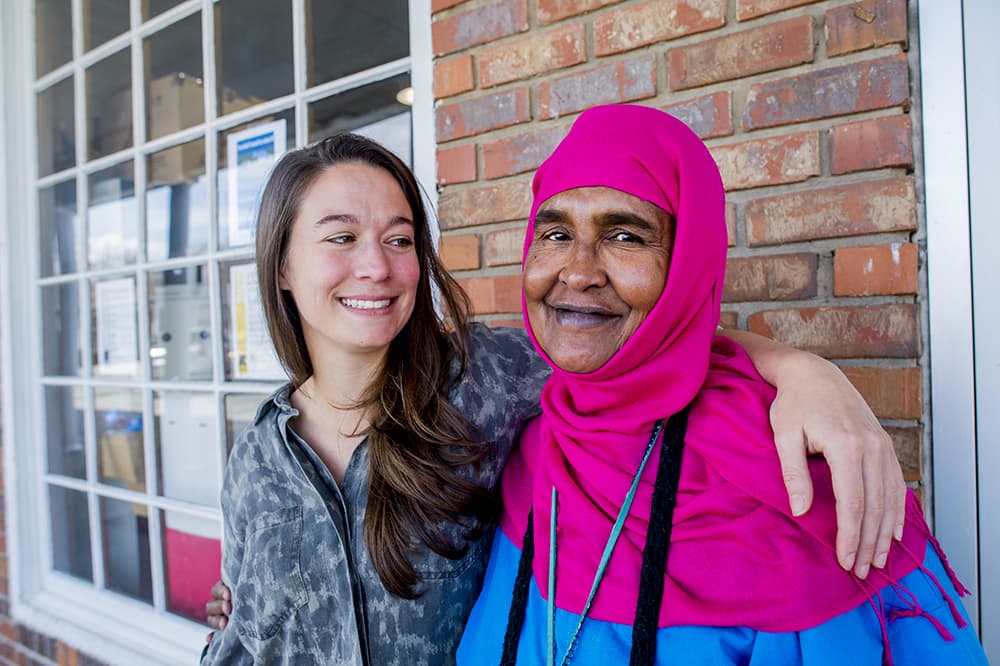
Originally published on March 11, 2015 at the Georgia State University News Hub. Archived here.
By Jeremy Craig
Amina Osman may be 86 years old, but she’s as active and vital as ever.
“Mama Amina,” as she’s known, fills an important role in Clarkston, Ga., where thousands are making new lives for themselves after fleeing persecution and war abroad
A Somali refugee herself, Osman lost all her children to war. But now, she’s the one who often helps connect individuals in a new community full of complex social support resources and government red tape.
“I do a lot because there are so many different cultures in this community, and when they come here, they have many challenges,” Osman said.
Refugees are given little money when they resettle in Clarkston, and sometimes, food runs out.
And there’s a whole host of papers and documents they need to survive. For example, without a Social Security card, refugees cannot work to earn a living.
Osman connects the community to get the vital resources they need to move forward.
And one Georgia State Ph.D. alumna, now an instructor at the university, has been working with Osman and the Somali community to adjust to life in the United States and use the resources available to them.
Dr. Cassie Leymarie and the Somali-American Community Center have received a half-million-dollar grant to carry out the vital work.
Leymarie, a linguist, started interacting with the Somali refugee community as a student working on her dissertation. She was fascinated with the microcosm of Clarkston. It’s a small town where refugees from across the globe have been resettled, and is now one of the most diverse communities in America.
While she went to volunteer agencies that work with refugees, she wanted to meet refugees themselves. She began walking up to businesses in the community and introducing herself.
“I met a lot of resistance initially, but then I walked into the Somali-American Community Center,” she said, “I shared my vision and the director liked it, so I just started volunteering at that organization.”
She helped with an after-school program, as well as English as a second language classes on the weekend, getting to know the community better, especially Somali refugee women.
The challenges these women face became the subject of her dissertation.
Documents such as Social Security, bills and school lunch forms surround life in America. Many of the refugee women didn’t have a grasp of reading and writing, even in Somali, which didn’t have a system of writing out the spoken language until the 1970s.
“One of the biggest things they had to adjust to was the fact that their life is sort of ruled now by documents that they have to fill to maintain and sustain their families,” Leymarie said.
As Osman helps with navigating the bureaucratic waters of documents, Leymarie learned more about how Mama Amina is a one-woman information center. In addition to her regular job as a customer service representative at a local grocery store, Thrifttown, Osman speaks nine languages, making her able to help a diverse group of people.
“She sits there and everyone comes to her,” Leymarie said.
She saw that Osman’s practice of using established refugees as resources could be used by other agencies and institutions.
For Osman, being a tie that binds in the community is a matter of the heart.
“My heart wants to do something to see everybody who is among us to be happy, for everybody to be comfortable instead of worried,” she said.
Archived at jeremyscraig.com on 12/6/2020.